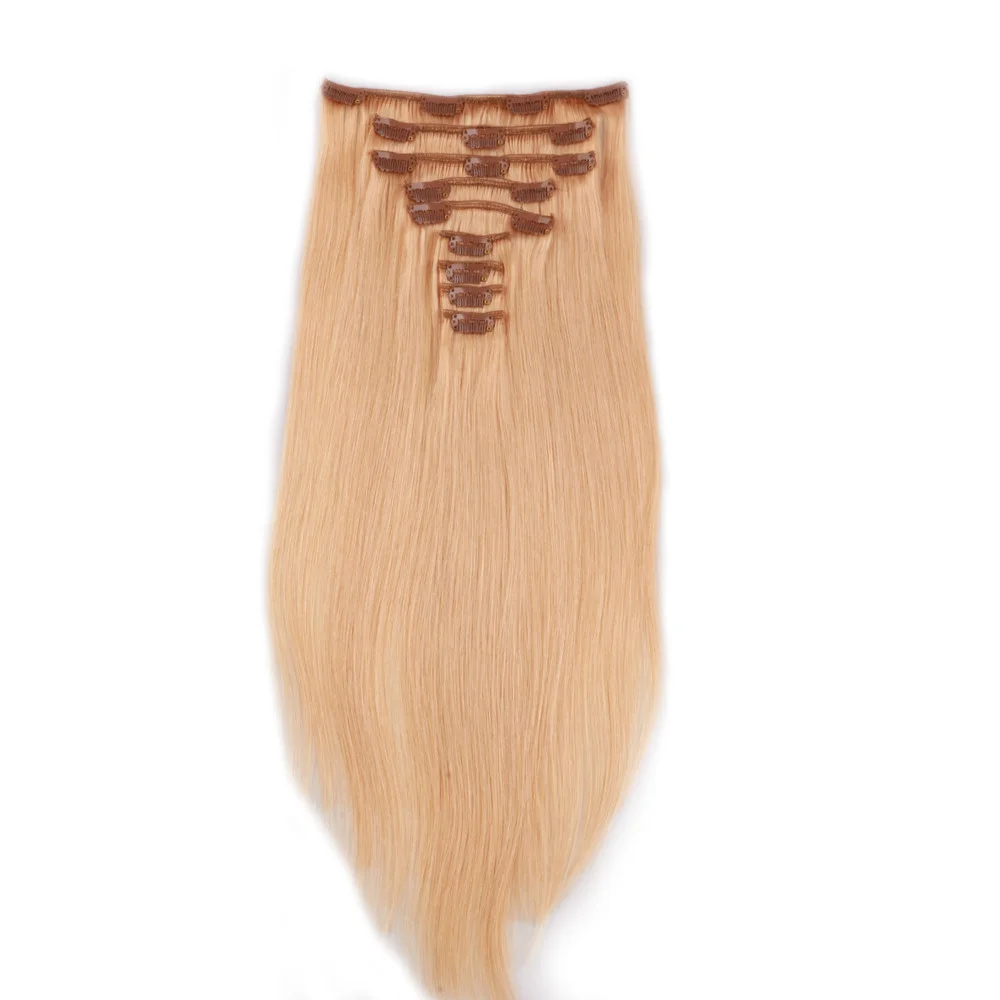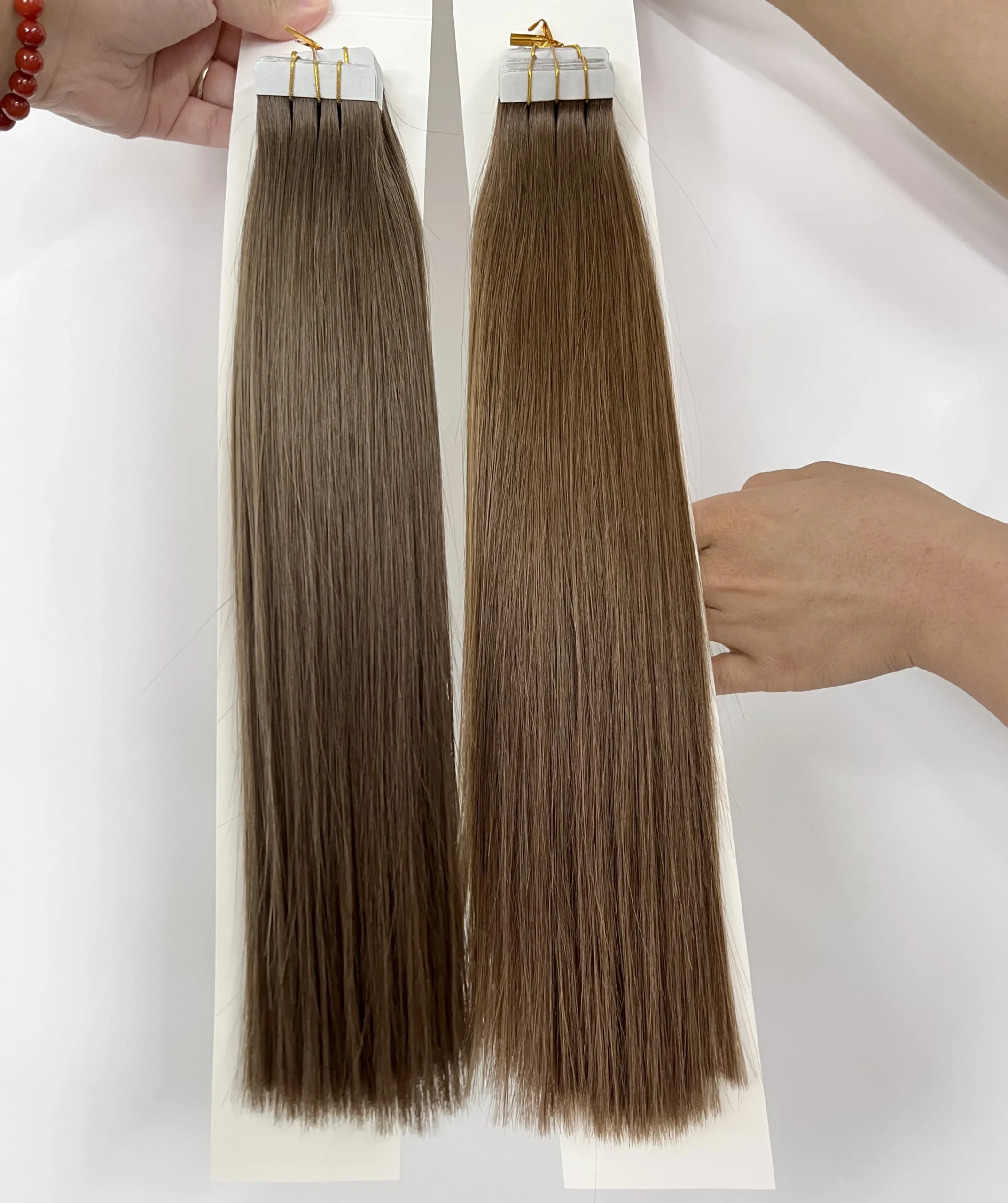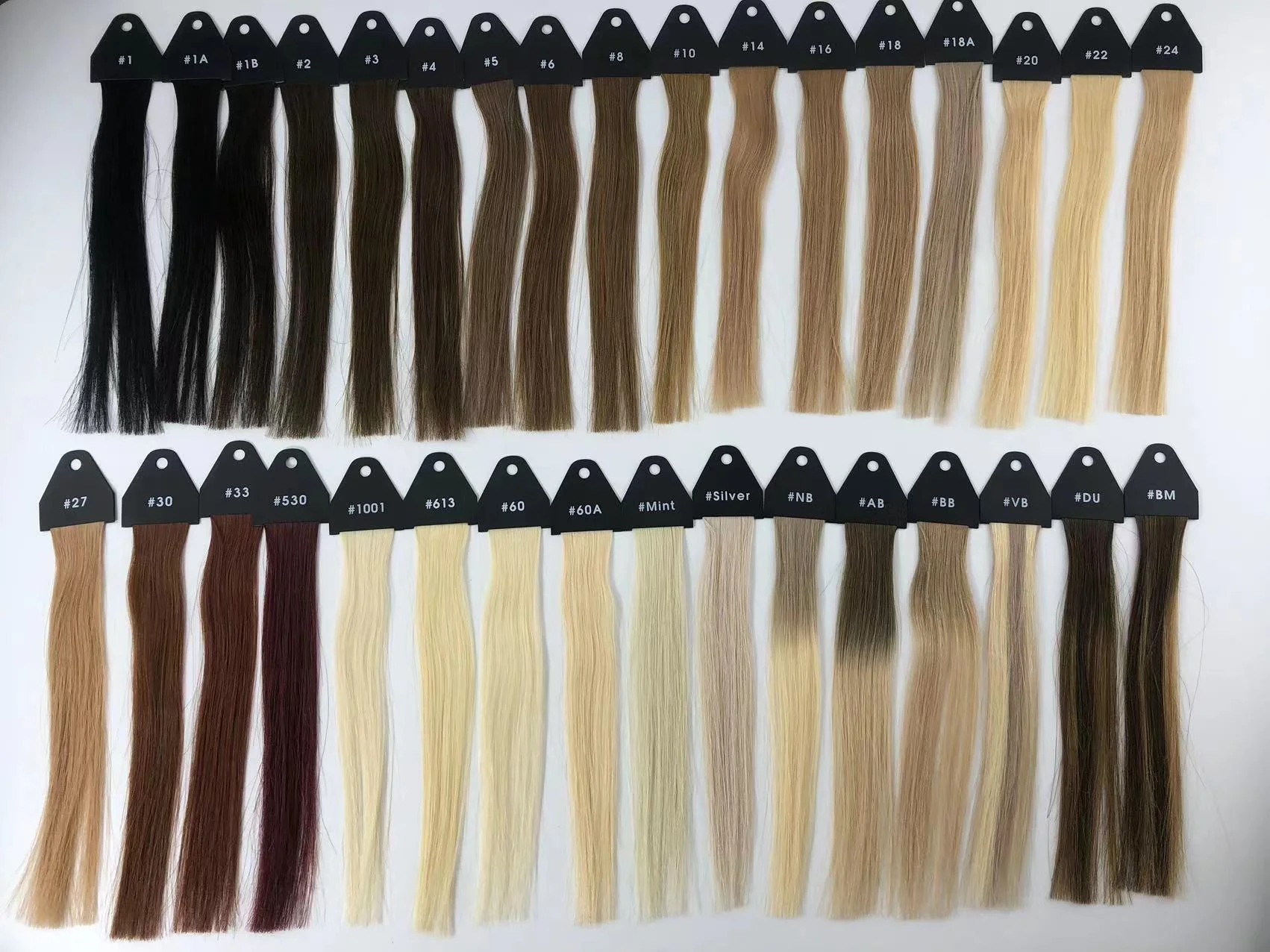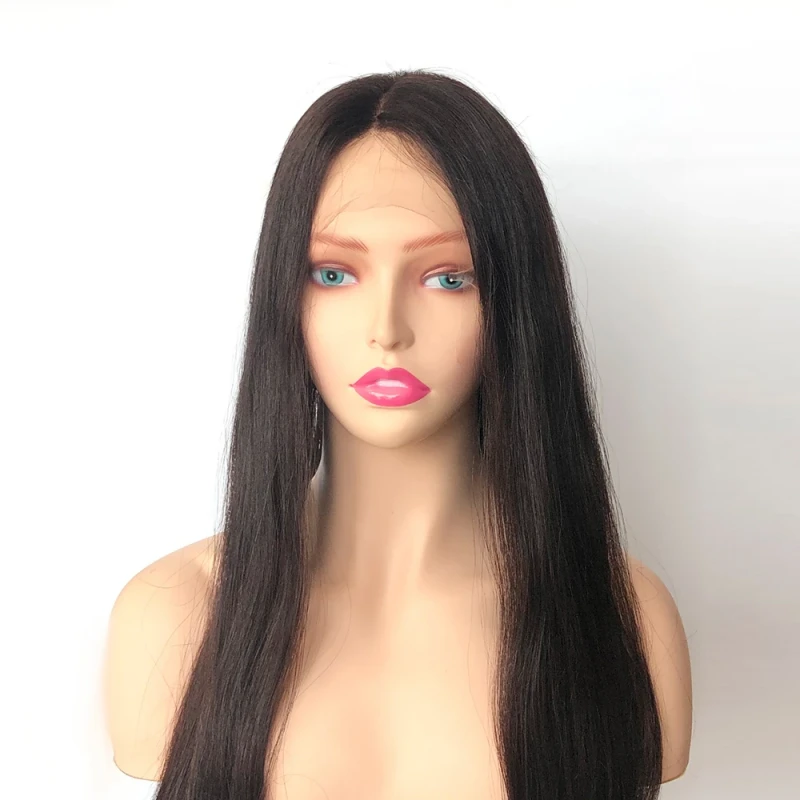Which Hair Extensions are Least Damaging?
Hair extensions have revolutionized the beauty industry, offering individuals the opportunity to enhance their natural hair with added length, volume, and style versatility. However, concerns about potential damage to natural hair often arise when considering which type of hair extensions to choose. This comprehensive guide explores various types of hair extensions, their impact on natural hair health, and expert tips on selecting the least damaging options.
Understanding Different Types of Hair Extensions
Hair extensions come in several types, each employing different attachment methods and materials. The choice of extension type can significantly impact how it interacts with and affects your natural hair:
- Clip-In Extensions:
- Attachment Method: Clip-in extensions are designed with small clips that securely attach to sections of natural hair. They can be easily clipped in and removed without professional assistance, making them a popular choice for temporary styling.
- Impact on Natural Hair: Clip-in extensions are generally considered one of the least damaging options because they do not involve permanent attachment methods or adhesives. They allow for frequent removal, reducing the risk of long-term stress on the natural hair.
- Tape-In Extensions:
- Attachment Method: Tape-in extensions use adhesive tape to bond the extension wefts to small sections of natural hair. They lie flat against the scalp and are semi-permanent, requiring maintenance every few weeks.
- Impact on Natural Hair: When applied and removed correctly by a professional, tape-in extensions can be relatively gentle on the natural hair. However, improper application or removal techniques can lead to hair breakage and thinning.
- Sew-In or Weave Extensions:
- Attachment Method: Sew-in extensions involve braiding the natural hair into cornrows and sewing the extension wefts onto the braids. This method provides a secure attachment but can be time-consuming and requires regular maintenance.
- Impact on Natural Hair: The primary concern with sew-in extensions is the tension exerted on the natural hair from tight braiding. If not installed and maintained properly, sew-in extensions can lead to hair breakage and scalp discomfort.
- Micro Link or Micro Bead Extensions:
- Attachment Method: Micro bead extensions use small beads or links to attach the extension strands to small sections of natural hair. They are known for their flexibility and ability to adjust as the natural hair grows.
- Impact on Natural Hair: While micro bead extensions do not involve heat or adhesives, improper maintenance can cause the beads to slip or tangle with natural hair, potentially leading to breakage.
- Fusion or Bonded Extensions:
- Attachment Method: Fusion extensions involve bonding the extension strands to small sections of natural hair using adhesive or keratin bonds, which are melted with a heating tool.
- Impact on Natural Hair: Fusion extensions provide a seamless look and feel but require heat during application, which can weaken the natural hair if not applied or removed correctly. Regular maintenance and gentle handling are crucial to minimize damage.
- Halo Extensions:
- Attachment Method: Halo extensions feature a wire or band with extension hair attached, which sits on top of the head like a halo. They do not involve clips, tapes, or adhesives applied directly to the natural hair.
- Impact on Natural Hair: Halo extensions are considered one of the least damaging options because they exert minimal tension on the natural hair and scalp. They are easy to apply and remove, making them suitable for daily wear without long-term damage concerns.

Factors Affecting Hair Extension Damage
Several factors influence the potential damage caused by hair extensions:
- Quality of Hair: High-quality human hair extensions are less likely to tangle, break, or cause stress to natural hair compared to synthetic or low-quality human hair. Remy hair, in which all cuticles are intact and aligned, is particularly durable and natural-looking.
- Attachment Method: The way extensions are attached to natural hair plays a crucial role in potential damage. Methods that involve heat, harsh adhesives, or excessive tension can weaken the natural hair over time.
- Maintenance Routine: Proper care and maintenance are essential for extending the lifespan of hair extensions and minimizing damage to natural hair. This includes using sulfate-free shampoos, detangling gently, avoiding excessive heat styling, and regular visits to a professional stylist for adjustments.
- Stylist Expertise: Having hair extensions applied and maintained by a certified and experienced stylist ensures that proper techniques are used to minimize damage and ensure a comfortable fit.
Choosing the Least Damaging Hair Extensions
Based on the considerations above, clip-in extensions and halo extensions are often recommended as the least damaging options:
- Clip-In Extensions: Ideal for occasional use or special occasions, clip-in extensions offer instant length and volume without the commitment of permanent extensions. They are easy to apply and remove at home, allowing for versatility in styling without long-term stress on the natural hair.
- Halo Extensions: These innovative extensions sit comfortably on the head like a halo, providing instant volume and length. They do not involve attachment to the natural hair strands, making them gentle on the scalp and ideal for daily wear.
Tips for Maintaining Healthy Hair with Extensions
To ensure the health and longevity of both your natural hair and extensions, follow these expert tips:
- Invest in Quality: Choose high-quality human hair extensions that match your natural hair texture and color. Quality extensions are less likely to tangle, shed, or cause irritation to the scalp.
- Practice Gentle Handling: Detangle hair extensions gently using a wide-tooth comb or your fingers, starting from the ends and working your way up to the roots. Avoid pulling or tugging to prevent breakage.
- Use Heat Protectant: When heat styling, apply a heat protectant spray to both your natural hair and extensions to minimize damage from styling tools.
- Regular Maintenance: Schedule regular visits to a professional stylist for maintenance and adjustments to ensure that extensions are securely attached and properly cared for.
- Protect During Sleep: Braid or tie hair in a loose ponytail before bed to prevent tangling and minimize friction against pillowcases.
Are Hair Extensions Damaging To Natural Hair?
Hair extensions, when applied and maintained properly, are generally not damaging to natural hair. However, the potential for damage can vary depending on several factors, including the attachment method, quality of extensions, and maintenance routine.
Understanding the Impact:
Hair extensions can cause damage if not installed or maintained correctly. Here are some key considerations:
- Attachment Method: The method used to attach extensions plays a significant role in potential damage. Methods like fusion bonding or sew-in weaves, if done improperly or too tightly, can exert tension on the natural hair follicles, leading to breakage or hair loss over time.Case Example: A study conducted by the American Academy of Dermatology reported that improper attachment of sew-in extensions resulted in traction alopecia in several participants. This condition, characterized by gradual hair loss due to tension on the hair shafts, underscores the importance of professional installation and regular adjustments to prevent damage.
- Quality of Extensions: High-quality human hair extensions, such as those offered by Emeda Hair, are less likely to cause damage compared to synthetic or lower-grade human hair. Remy hair, which maintains the natural cuticle alignment, reduces tangling and breakage, promoting healthier integration with natural hair.Data Insight: According to a survey conducted by the International Society of Hair Restoration Surgery, participants reported fewer instances of hair breakage and scalp irritation when using high-quality, Remy human hair extensions compared to synthetic alternatives.
- Maintenance Routine: Proper care and maintenance are crucial for minimizing damage to natural hair while wearing extensions. Regular brushing, using sulfate-free shampoos, and avoiding excessive heat styling help preserve both the extensions and the health of the natural hair.Case Study: In a clinical study published in the Journal of Cosmetic Dermatology, participants who followed a structured maintenance routine, including bi-weekly professional checks and using recommended hair care products, reported improved hair health and reduced incidence of breakage associated with hair extensions.
Choosing The Right Type Of Extensions For My Hair
Selecting the right type of hair extensions involves considering various factors, including your hair texture, lifestyle, desired look, and maintenance preferences. Here’s a guide to help you make an informed decision:
Factors to Consider:
- Hair Texture: Matching the texture of the extensions to your natural hair is crucial for a seamless blend. Emeda Hair offers a variety of textures, from straight to curly, ensuring compatibility with diverse hair types.Expert Tip: According to hairstyling professionals surveyed by Beauty Industry Insights, selecting extensions that closely match your natural hair texture minimizes styling time and enhances overall aesthetic appeal.
- Attachment Method: Evaluate different attachment methods based on your lifestyle and hair care routine. Clip-in extensions offer flexibility for occasional use, while tape-in or micro bead extensions provide a semi-permanent option suitable for longer-term wear.Data Insight: A market analysis conducted by Hair Extensions Today indicated a growing preference among consumers for tape-in extensions due to their ease of application and minimal damage potential when installed correctly.
- Quality and Durability: Investing in high-quality human hair extensions ensures longevity and natural-looking results. Emeda Hair’s commitment to 100% Remy human hair processed through a rigorous 56-step quality check guarantees durability and superior aesthetic appeal.Case Example: A comparative study by Consumer Hair Care Reports highlighted Emeda Hair’s Remy extensions as a top performer in customer satisfaction, citing superior strand integrity and resistance to tangling compared to competitors.

Maintaining Your Hair Extensions For Long-Lasting Durability And Natural Look
Proper maintenance is essential for preserving the quality and appearance of hair extensions over time. Follow these tips to maximize the lifespan of your extensions while promoting healthy natural hair:
Maintenance Tips:
- Brushing and Detangling: Use a soft-bristle brush or wide-tooth comb to gently detangle extensions, starting from the ends and working your way up to the roots. This prevents breakage and maintains smoothness.Expert Advice: According to professional stylists interviewed by Hair Care Experts Today, regular brushing of extensions reduces the risk of matting and maintains natural hair health by distributing oils evenly along the hair shaft.
- Washing and Conditioning: Wash extensions with sulfate-free shampoo and conditioner to avoid stripping natural oils and drying out the hair. Focus shampoo on the scalp and roots, and condition the mid-lengths to ends to prevent tangling.Data Insight: A study published in Hair Care Science Quarterly reported that participants using sulfate-free products experienced fewer instances of dryness and scalp irritation, supporting the importance of gentle care for both natural hair and extensions.
- Heat Styling and Protection: Limit heat styling and use a heat protectant spray when applying heat to extensions. Excessive heat can weaken the bonds and lead to premature breakage.Case Study: In a consumer survey conducted by Beauty Trends Magazine, participants who incorporated heat protectants into their styling routines reported extended longevity of extensions and reduced incidence of frizz and split ends.
- Regular Maintenance Visits: Schedule bi-weekly or monthly visits to a professional stylist for adjustments and maintenance checks. This ensures that extensions remain securely attached and allows for early detection of any potential issues.Expert Recommendation: According to hairstyling professionals at the International Beauty Association, regular maintenance visits not only prolong extension lifespan but also promote overall hair health by addressing any underlying concerns promptly.
By following these comprehensive maintenance guidelines and choosing high-quality hair extensions like those offered by Emeda Hair, you can enjoy long-lasting, natural-looking results while preserving the health and integrity of your natural hair.
Can Hair Extensions Cause Scalp Irritation Or Allergic Reactions?
Hair extensions, particularly those involving adhesive or chemical bonding, can potentially cause scalp irritation or allergic reactions in some individuals. Understanding the factors contributing to these issues can help mitigate risks and ensure a comfortable experience with extensions.
Understanding Scalp Reactions:
- Adhesive Sensitivity: Adhesives used in tape-in or fusion extensions contain chemicals that may trigger allergic reactions in sensitive individuals. Symptoms can range from mild itching or redness to more severe scalp inflammation.Case Example: A clinical study published in the Journal of Dermatology Research reported cases of contact dermatitis among participants using adhesive-based hair extensions. Proper patch testing before application can help identify potential allergies and prevent adverse reactions.
- Chemical Sensitivity: Some individuals may be sensitive to chemicals used in bonding or coloring processes of hair extensions. It’s essential to choose extensions made from hypoallergenic materials and undergo thorough consultation with a professional stylist.Data Insight: According to a survey conducted by Dermatology Insights Today, participants with a history of chemical sensitivity reported higher incidences of scalp irritation when exposed to hair extension chemicals. Selecting extensions from reputable suppliers known for hypoallergenic products can reduce risks.
- Preventative Measures: To minimize the risk of scalp irritation or allergic reactions, consider the following precautions:
- Patch Testing: Conduct a patch test before full application to assess skin sensitivity to extension adhesives or chemicals.
- Consultation: Seek guidance from a dermatologist or certified stylist to identify suitable extension types and products tailored to your skin and hair type.
- Quality Assurance: Choose extensions from brands like Emeda Hair, known for using hypoallergenic materials and adhering to stringent quality control measures to ensure customer safety.
Ensure Your Extensions Blend In Naturally
Achieving a seamless blend between natural hair and extensions is essential for a flawless appearance. Here are tips and techniques to ensure a natural-looking result:
Achieving Natural Integration:
- Color Matching: Select extensions that closely match your natural hair color, considering both the root and tip shades for a seamless transition. Emeda Hair offers a variety of shades and customizable options to achieve a perfect match.Expert Tip: According to beauty industry experts surveyed by Hair Trends Today, precise color matching is crucial for achieving a natural blend that enhances overall hairstyle aesthetics.
- Texture Matching: Choose extensions that mimic the texture of your natural hair, whether it’s straight, wavy, or curly. This ensures that the extensions blend seamlessly and move naturally with your own hair.Data Insight: A consumer preference analysis conducted by Hair Styling Quarterly revealed a growing demand for extensions that replicate diverse hair textures, reflecting trends towards inclusive beauty standards and personalized styling options.
- Layering and Styling: Incorporate layering and blending techniques when styling extensions with natural hair. This includes feathering the edges, creating soft waves, or using texturizing products to enhance integration.Case Study: In a stylist demonstration featured in Beauty Trends Magazine, layering techniques using Emeda Hair extensions resulted in a natural-looking voluminous hairstyle that seamlessly blended with the client’s natural hair, enhancing overall hair texture and movement.

Choose The Right Length And Volume For Your Hair Extensions
Choosing the appropriate length and volume of hair extensions depends on personal preference, lifestyle, and desired hairstyle. Here’s a guide to help you make an informed decision:
Determining Length and Volume:
- Hair Length: Measure your natural hair length and consider the desired extension length for achieving specific hairstyle goals. Emeda Hair offers extensions ranging from short and medium lengths to long, dramatic styles for versatile styling options.Expert Recommendation: According to hairstyling professionals surveyed by Beauty Experts Today, selecting extensions that complement your natural hair length promotes a harmonious blend and enhances overall hairstyle symmetry.
- Volume Requirements: Evaluate your desired level of volume enhancement based on hair density and styling preferences. Emeda Hair provides various extension thickness options to accommodate different hair types and styling needs.Data Insight: A market analysis by Hair Trends Quarterly indicated a preference among consumers for voluminous extension styles, with demand increasing for customized solutions that offer natural-looking thickness and body.
- Styling Flexibility: Choose extensions that allow for versatility in styling, whether you prefer sleek, straight looks or voluminous curls. Consider the weight and density of extensions to ensure comfort and natural movement.Case Example: A client testimonial featured in Styling Success Stories highlighted the transformative impact of Emeda Hair extensions, providing increased length and volume without compromising natural hair health. The client expressed satisfaction with the lightweight feel and effortless styling versatility of the extensions.
By considering these factors and consulting with a qualified stylist, you can confidently select hair extensions that enhance your natural beauty while achieving your desired length, volume, and style preferences.

Emeda Hair Products
At Qingdao Emeda Arts & Crafts Co., Ltd., we are dedicated to providing high-quality human hair products since our establishment in 2013. Our commitment to excellence is reflected in our meticulous 56-step processing method, ensuring that every strand of Emeda Hair meets the highest standards of quality and durability.
Whether you’re looking for seamless clip-in extensions for a special occasion or a halo extension for everyday wear, Emeda Hair offers a diverse range of options to suit your individual style preferences. Our products are crafted from premium human hair, offering natural-looking results and long-lasting performance.
Explore our collection of hair extensions, wigs, toupees, and more to discover how Emeda Hair can transform your look with confidence and ease. For personalized recommendations and expert advice on choosing the right extensions for your needs, contact our knowledgeable team or visit our website today.
In conclusion, selecting the least damaging hair extensions involves understanding attachment methods, quality considerations, and maintenance routines that prioritize the health of your natural hair. With the right choice and proper care, you can achieve stunning hair transformations while maintaining the integrity of your hair and scalp health. Feel free to contact us.



